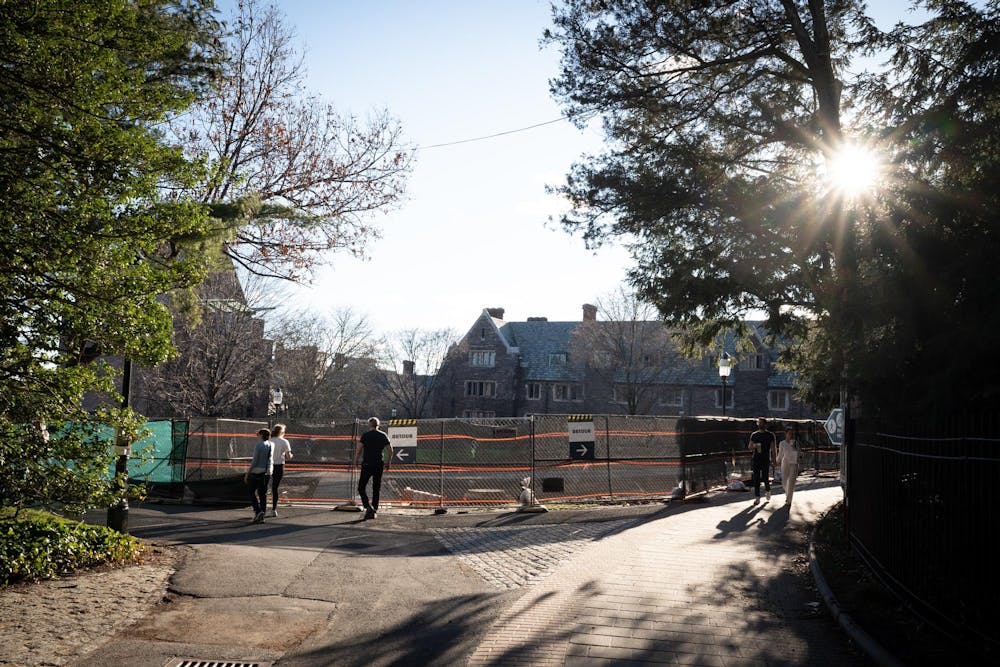Whether it’s the seemingly unending wait to cross Nassau Street or the near-catastrophic speeds at which cars drive near campus, Princeton is not always the best place to be a pedestrian. The University implemented a partial solution to this problem within the last few months: the Personal Electric Vehicle (PEV) ban. The town council has also passed a ban on scooters, bicycles, skateboards, and roller skates in the “Central Business District,” an area near campus. While these policy changes have provided some relief to students walking on the sidewalks of campus, they have not solved larger problems of pedestrian safety on campus roads and nearby public roads. The University should work with the town and county government to transform our surrounding roadways to reduce accidents and safeguard pedestrians.
In 2021, Mercer County reported 8,287 total crashes, leaving it as the county with 12th most incidents in the state. The total crashes per capita seems less alarming, with Mercer County having 7 percent fewer crashes per capita than the state of New Jersey overall. However, in 2021, there were 6.1 million car accidents for a U.S. population of almost 337 million, meaning that the per-capita Mercer county accident rate was 22 percent higher than the national average.
There have been cases of pedestrian injuries on or adjacent to campus in the past. On April 8, 2015, Nyssa Emerson GS ’19, was struck by a motorist while crossing Washington Road at Ivy Lane, sustaining severe injuries. This incident was not isolated. In 2017, pedestrian Leslie Goodrich Rubin was struck and killed by a concrete truck crossing the Washington Road and Nassau Street intersection.
Given the significantly higher per capita accident rate in Mercer County compared to the national average, certain steps must be taken to protect the citizens of the county and Princeton’s student body. The first measures to be taken should involve stricter speed monitoring around the county. Traffic police could increasingly give out speeding tickets, especially considering their decline in doing so since 2019. Additional radar speed signs, which let drivers know when they are driving over the speed limit, should be implemented. Driving just 10 miles over the speed limit doubles the risk of death by car crash, so such a change could have a significant effect on total accidents in the county. The New Jersey Motor Vehicle Commission could also consider the implementation of even more speed limit signs, especially on roads running through campus. The University could encourage the Department of Transportation to provide this signage, which would be especially beneficial along Washington Road and Alexander Street, as both are frequently traversed by pedestrians and vehicles driving through campus.
In terms of safety measures that should be implemented near Princeton’s campus, making infrastructure more pedestrian friendly needs to become a priority. Some recent improvements have been made, such as the introduction of expanded sidewalks and reduced space for vehicles on Witherspoon Street. However, given the extent to which construction has consumed the campus, the University evidently has the resources and means to make more changes to campus infrastructure for the benefit of the campus community. Instead of focusing on constructing new buildings, construction should include increasing the pedestrian accessibility of campus. This could involve increasing the connectivity of different walking paths on campus to make the campus and surrounding area even more traversable to pedestrians.
Bike lanes could be expanded in the street to allow bikers to use the roads without the fear of injury from surrounding vehicles. Additionally, simply increasing the width of sidewalks along busy streets would allow students to get to class efficiently and safely. The University should use its influence to advocate for these measures.
Given the area’s significantly higher accident rate compared to the national average, specific measures need to be taken in Mercer County to keep pedestrians safe on and around campus. The crackdown on speeding in and around the University is one of such measures that will likely make a significant difference in the number of accidents on and around campus. Specific signage and other infrastructure changes should also be taken to keep the pedestrian population safe. More changes beyond the scooter ban can continue to make pedestrian life safer on campus and in the surrounding area.
Davis Hobley is a member of the Class of 2027 and intends to major in neuroscience. He hails from Rochester, Mich. and can be reached through his email (dh2172@princeton.edu) and personal Instagram (@davis_20.23).








